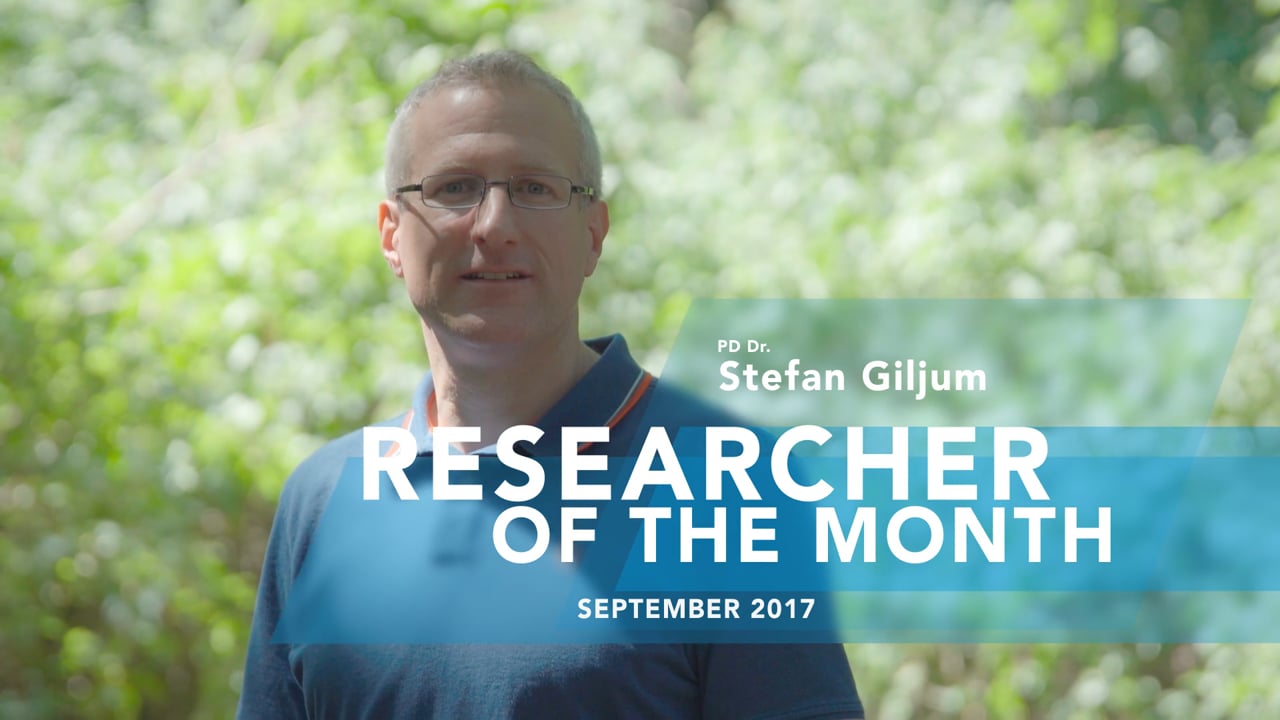Stefan Giljum

Stefan Giljum
Researcher of the Month
Outsourcing increases Europe’s global footprint
At 20 to 30 tons per capita, Europeans’ annual resource consumption is ten times as high as the average consumption in Africa or Asia. Europe’s high levels of consumption are based increasingly on raw materials both extracted and processed in other regions of the world. According to WU researcher Stefan Giljum, this means Europe is contributing to environmental problems like climate change, deforestation, or water scarcity, and is becoming increasingly dependent on foreign fossil fuels and metallic commodities. In a large-scale research project at WU, he is investigating the amount of natural resources required for the production and consumption of goods and services and the effects of globalization on our use of raw materials.
The equivalent of 100 truckloads of raw materials per second are required to supply our global economy. Over the course of one year, this amounts to 90 billion tons of materials sourced from mining, oil drilling, agriculture, and forestry. As a result of globalization, the locations where products are consumed are increasingly distant from where materials are originally extracted, manufactured, or processed. In a <link https: www.wu.ac.at en ecolecon research sustainable-resource-use erc-fineprint>project funded by the European Research Council (ERC), Stefan Giljum, head of the research group for Sustainable Resource Use, and his team at WU’s Institute for Ecological Economics are tracing products consumed in European countries back to the precise geographical location where specific environmental and social impacts related to raw material extraction take place. “To quantify raw material extraction in countries around the world, we are gathering statistical data from a variety of sources and pairing them with economic models that map out global supply chains for all product groups,” explains Stefan Giljum. “This allows us to trace the flow of raw materials from the country where they are extracted through the various processing steps all the way down to the end consumer.”
Increasing imports, growing dependency
The project’s findings show that Asia’s share of global resource extraction has been growing markedly, particularly since the turn of the 21st century. In 2013, already 61% of all raw materials extracted around the world were of Asian origin, and this number continues to rise. In comparison, Europe’s share of only 8% is very low. Raw materials extracted in Asia are used to manufacture products for domestic use in the countries of extraction, but many other regions of the world profit from them as well. “In recent years, countries like China have become the world’s most important exporter for a wide variety of different products, including electronics and housewares, textiles, and toys. Most of these products are exported to Europe or North America,” says Giljum. He continues, “That makes these two continents the regions with the highest level of dependency on foreign imports.” Giljum says that Europe is particularly dependent on two raw material categories: On the one hand on fossil fuels, because Europe imports over 70% of the petroleum and natural gas it requires for industrial production, mobility, and heating. However, with an import rate of over 85%, Europe is even more dependent on foreign metals. This affects all products based on metal components, like cars, household items, and electronics. “In some cases, for example rare metals used in the electronics industry, Europe’s import rate is actually 100%,” says Giljum.
Making the global effects of consumption visible
The more complex and international the production chain of an everyday item is, the less aware consumers are of the environmental and social impacts of consumption on other regions of the world. A cell phone, for example, requires 30 different raw materials sourced from countries around the world. “My goal is to make the global connections between manufacturing and consumption visible. In doing so, I hope to be able to provide an empirical basis for the development of policy measures for sustainable supply chains,” says Giljum about his research. During the five-year ERC project, Stefan Giljum and his team will be the first to directly connect the ecological and social conditions in the countries where raw materials are extracted with the consumption of products in Europe. “With regard to the environmental impact of our consumption, it makes a huge difference if, for example, metals are imported from extremely dry areas like the Atacama Desert in Chile or from more temperate climate zones with a sufficient supply of water,” he explains.
Sustainable resource use in the age of planetary boundaries
This research provides valuable conclusions for the realization of a sustainable global economy. “Globalization and international trade are currently organized in such a way that raw materials from countries with low per capita consumption levels are exported to countries where the per capita consumption is already very high,” says the researcher. As a result, international trade is increasing ecological inequality around the world. However, to improve the material living standards of the population in poverty-stricken regions like sub-Saharan Africa or Southern Asia, resource consumption in these countries would have to increase. “In a world that has already crossed environmental planetary boundaries, this growth is only possible if at the same time, raw material use decreases in high-consumption regions like Europe. The knowledge of the negative impacts of commodity extraction in the source countries should be used to help us improve extraction conditions and increase resource use efficiency in international production chains.”
More about this topc
Giljum, S., Wieland, H., Lutter, S., Bruckner, M., Wood, R., Tukker, A., Stadler, K., 2016.
Identifying priority areas for European resource policies: a MRIO-based material footprint assessment.
Journal of Economic Structures 5, 1-24. DOI: 10.1186/s40008-016-0048-5Tukker, A., Bulavskaya, T., Giljum, S., de Koning, A., Lutter, S., Simas, M., Stadler, K., Wood, R. 2016.
Environmental and resource footprints in a global context: Europe’s structural deficit in resource endowments.
Global Environmental Change 40, 171-181. DOI: 10.1016/j.gloenvcha.2016.07.002Giljum, S., Bruckner, M., Martinez, A., 2015.
Material Footprint Assessment in a Global Input‐Output Framework. Journal of Industrial Ecology.
19, 792-804. DOI: 10.1111/jiec.12214Stefan Giljum and his team also administrates the world's biggest online portal for material flow data, providing access to data on the national level.
To the plattform
